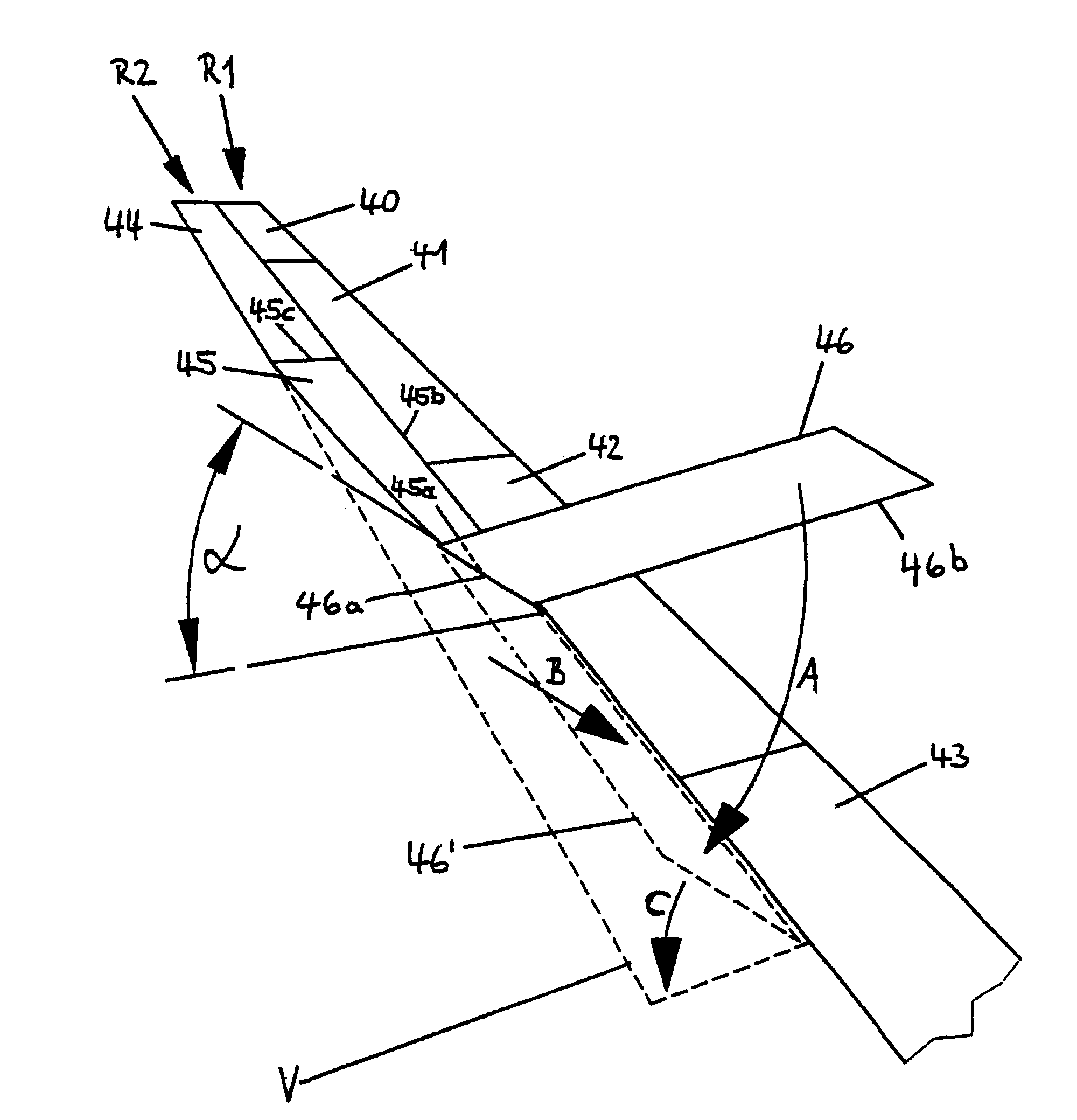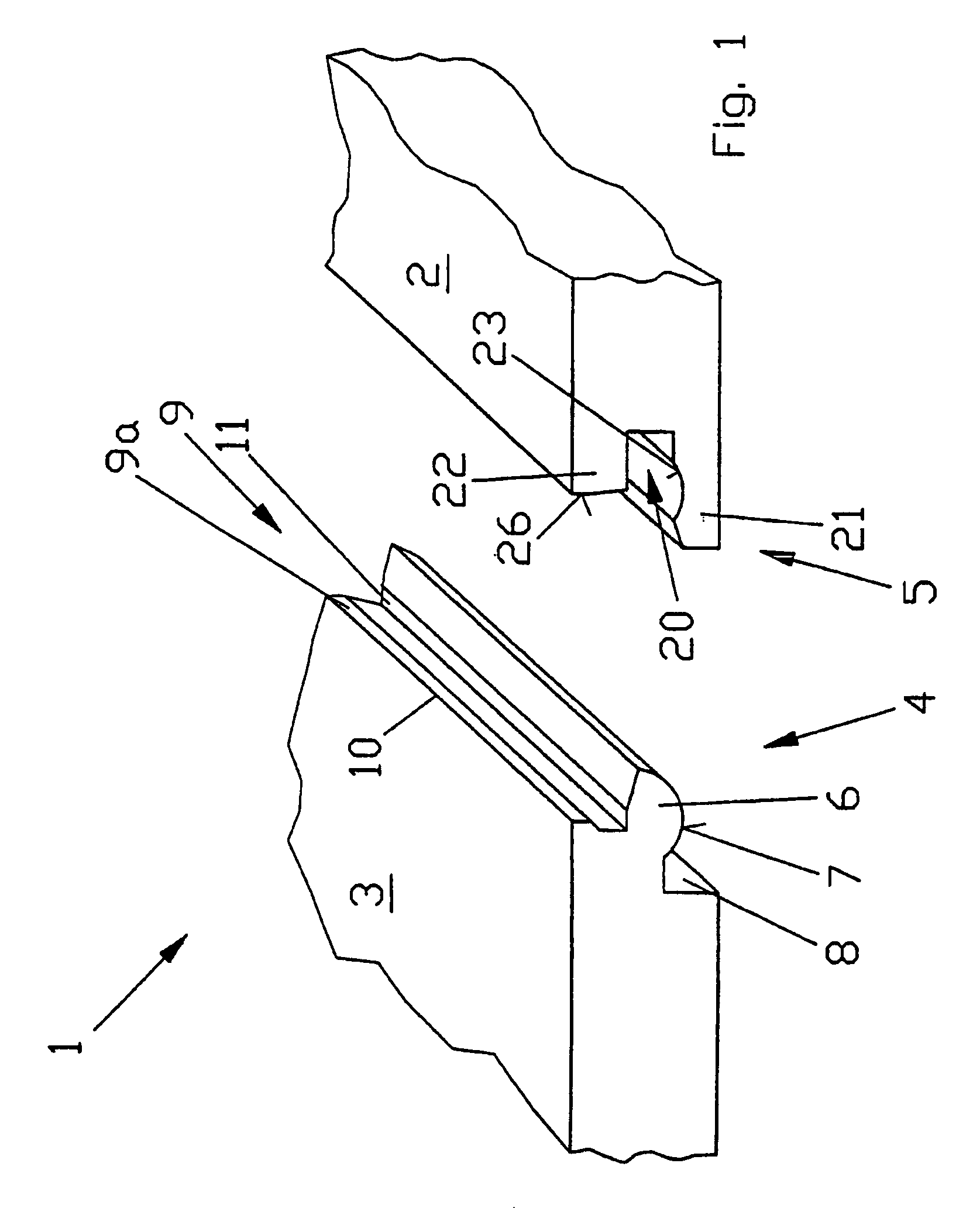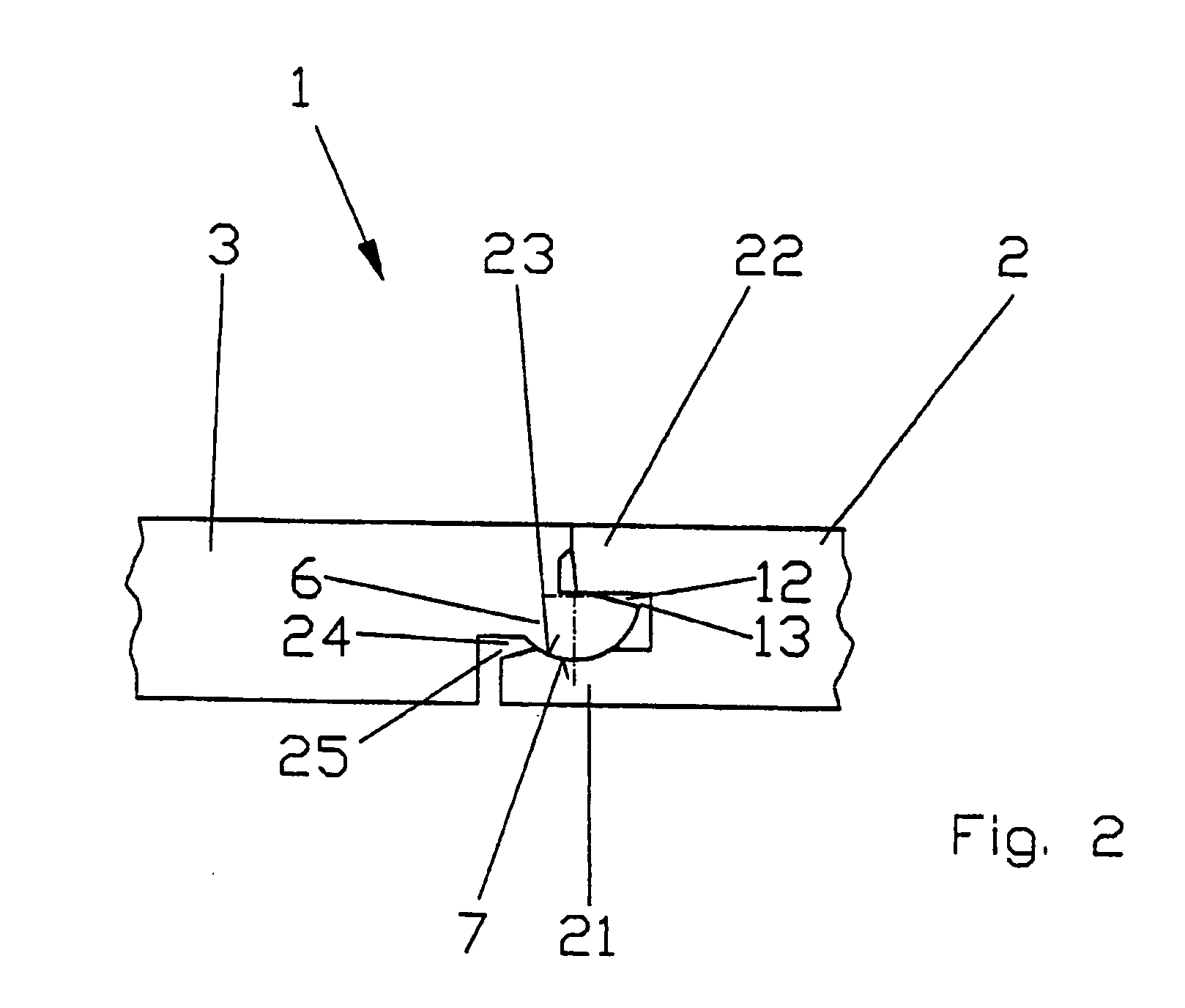Method for laying and interlocking panels
a technology of interlocking panels and panels, which is applied in the direction of building repairs, tongue/groove making apparatus, walls, etc., can solve the problems of greater or lesser decrease in inclination, and achieve the effect of reducing inclination, reducing inclination, and reducing inclination
- Summary
- Abstract
- Description
- Claims
- Application Information
AI Technical Summary
Benefits of technology
Problems solved by technology
Method used
Image
Examples
Embodiment Construction
[0039]According to the drawing, fastening system 1, required for the method for laying and interlocking rectangular panels, is explained based on oblong, rectangular panels 2 and 3, a section of which is illustrated in FIG. 1. Fastening system 1 displays retaining profiles, which are located on the narrow sides of the panels and designed as complementary form-fitting profiles 4 and 5. The opposite form-fitting profiles of a panel are of complementary design in each case. In this way, a further panel 3 can be attached to every previously laid panel 2.
[0040]Form-fitting profiles 4 and 5 are based on the prior art according to German utility model G 79 28 703 U1, particularly on the form-fitting profiles of the practical example. The form-fitting profiles according to the invention are developed in such a way that they permit the articulated and resilient connection of panels.
[0041]One of the form-fitting profiles 4 of the present invention is provided with a joint projection 6 protrud...
PUM
 Login to View More
Login to View More Abstract
Description
Claims
Application Information
 Login to View More
Login to View More - R&D
- Intellectual Property
- Life Sciences
- Materials
- Tech Scout
- Unparalleled Data Quality
- Higher Quality Content
- 60% Fewer Hallucinations
Browse by: Latest US Patents, China's latest patents, Technical Efficacy Thesaurus, Application Domain, Technology Topic, Popular Technical Reports.
© 2025 PatSnap. All rights reserved.Legal|Privacy policy|Modern Slavery Act Transparency Statement|Sitemap|About US| Contact US: help@patsnap.com



